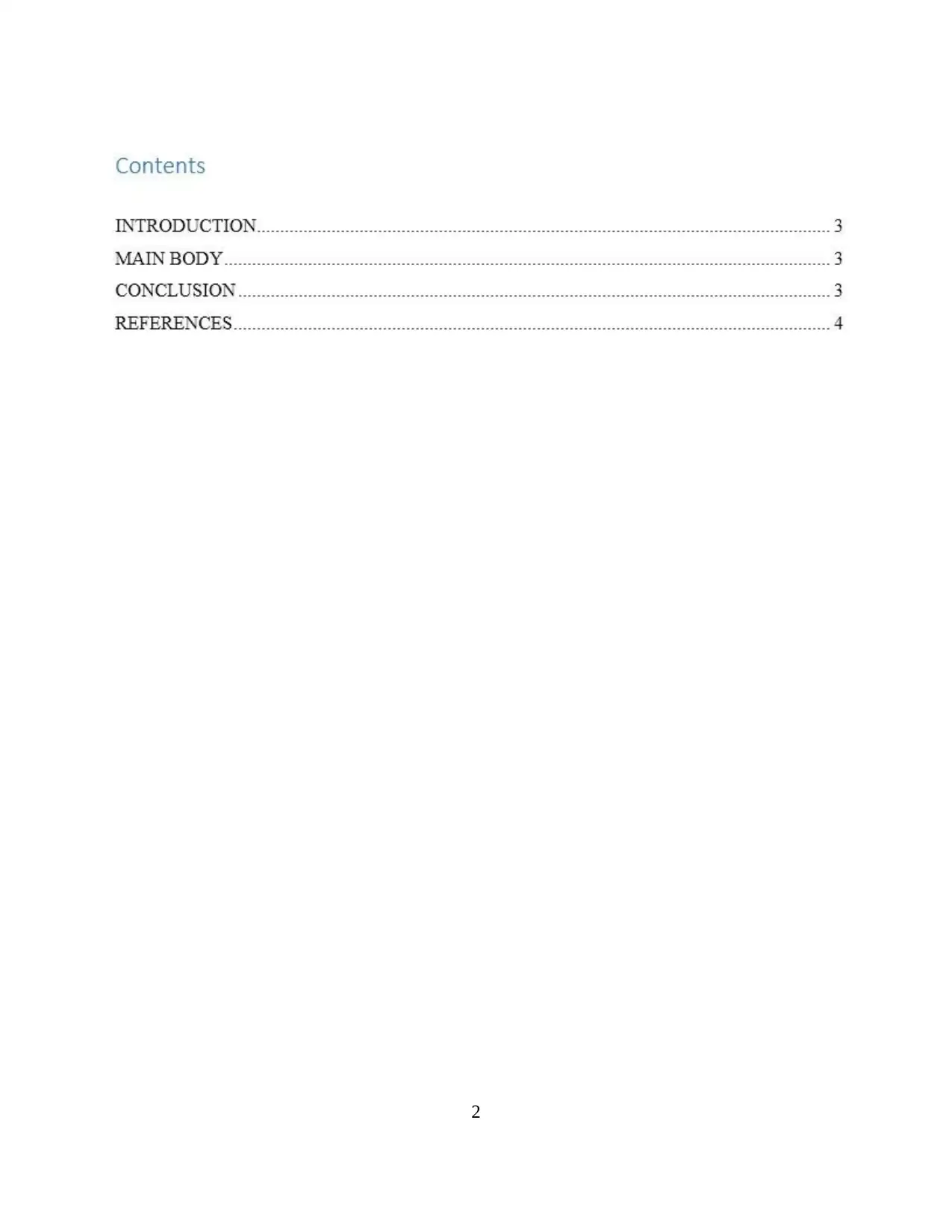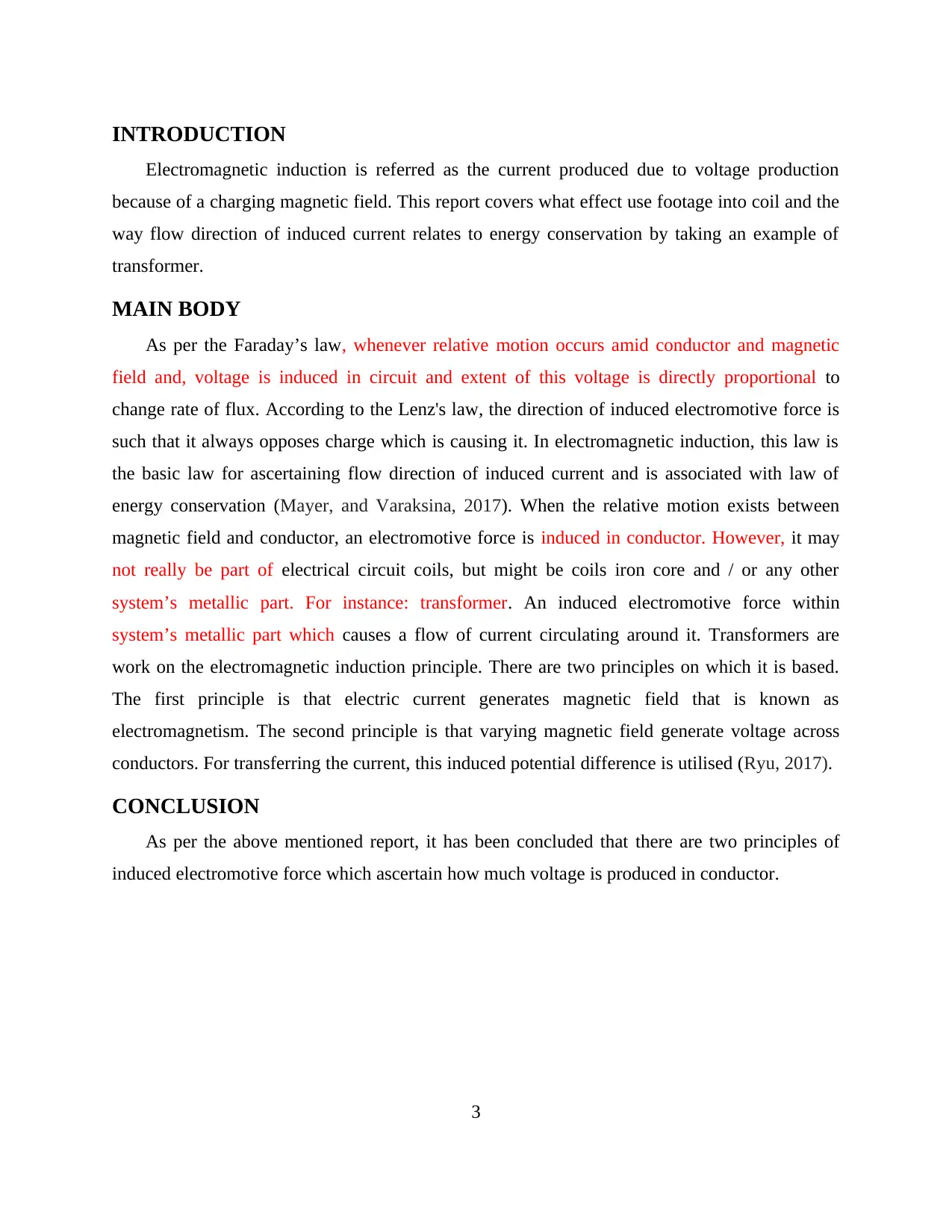Electromagnetic Induction: Report on Transformer and its working.
VerifiedAdded on 2023/01/06
|4
|383
|76
Report
AI Summary
This report explores the concept of electromagnetic induction, focusing on its application in transformers. It begins by defining electromagnetic induction as the generation of current due to a changing magnetic field. The report then explains Faraday's law, which states that the induced voltage is proportional to the rate of change of magnetic flux, and Lenz's law, which determines the direction of the induced electromotive force, emphasizing its connection to energy conservation. The main body discusses how transformers utilize electromagnetic induction, detailing the two key principles: the creation of a magnetic field by electric current and the generation of voltage by a varying magnetic field. The report concludes by summarizing the key principles of induced electromotive force and its relevance to transformers and their applications. The report also includes references to relevant academic sources.
1 out of 4











![[object Object]](/_next/static/media/star-bottom.7253800d.svg)